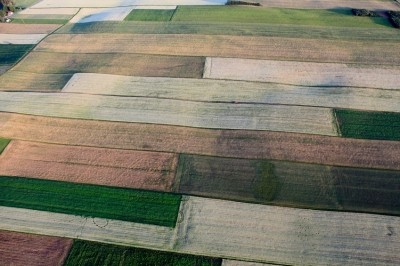Global mapping can help reduce El Nino crop losses

El Nino and La Nina weather anomalies are adversely affecting global yields of major crops including maize, wheat and rice, according to the new research published in Nature Communications.
The international research team have developed a global map quantifying the effects of El Nino Southern Oscillation (ENSO) - which reveals significant negative impacts of between 9 and 13% in some harvest areas, and a positive impact limited to between just 2 and 4% of crop harvests.
“Minimizing the negative impacts of ENSO or maximizing the positive impacts of ENSO on global yields are increasingly important not only to ensure short-term food availability but also to maintain positive yield trends,” said the team – led by Toshichika Iizumi from the National Institute for Agro-Environmental Sciences in Japan.
No global map has been designed to give a clear indication of the impacts of ENSO on crop yields, they explained.
Given the high reliability of seasonal ENSO forecasts, the ability to link this to variations in global yields has a potential benefit to food monitoring and famine early warning systems, they said.
The Japanese-led team maintain the global maps will enable national governments in ‘import-dependent’ countries to manage regional trade and storage based on the current ENSO phase.
“Such efforts could increase the ability of national governments and commercial entities to effectively respond to ENSO’s impacts on food availability for the poor and could improve farmers’ ability to manage income risk and reduce malnutrition.”
Regional variations
While El Nino improves global mean yields of soybeans by up to 5.4%, it can reduce yields of maize, wheat and rice by as much as -4.3% and overall global mean yields for all four crops is below normal. Yields during La Nina years are also below normal, at -4.5 to 0.0%, says the report.
“These crops are the principal cereal and legume crops worldwide, providing nearly 60% of all calories produced on croplands. The results show that significant negative and positive impacts on the yields associated with El Nino, respectively, appear in up to 22%–24% and 30%–36% of harvested areas worldwide,” said the authors.
The negative impacts of El Nino are the result of warmer, drier conditions. Vulnerable crops including maize in Zimbabwe, soybean in India, rice in Indonesia and wheat in Australia.
Conversely increased yields were noted in Brazil, Argentina, the USA, China, Kazakhstan and parts of South Africa where conditions are cooler and wetter, although there are variations across regions and crop types.
The geographical impact of La Nina is different to that of El Nino. For the four crops examined in this study, the wetter conditions had significant negative consequences in parts of North, Central and South America, and Ethiopia; and positive results in parts of South and West Africa.
Source: Nature Communications
Published May 15, 2014, doi: 10.1038/ncomms4712
“Impacts of El Nino Southern Oscillation on the global yields of major crops”
Authors:Toshichika Iizumi, Jing-Jia Luo, et al














